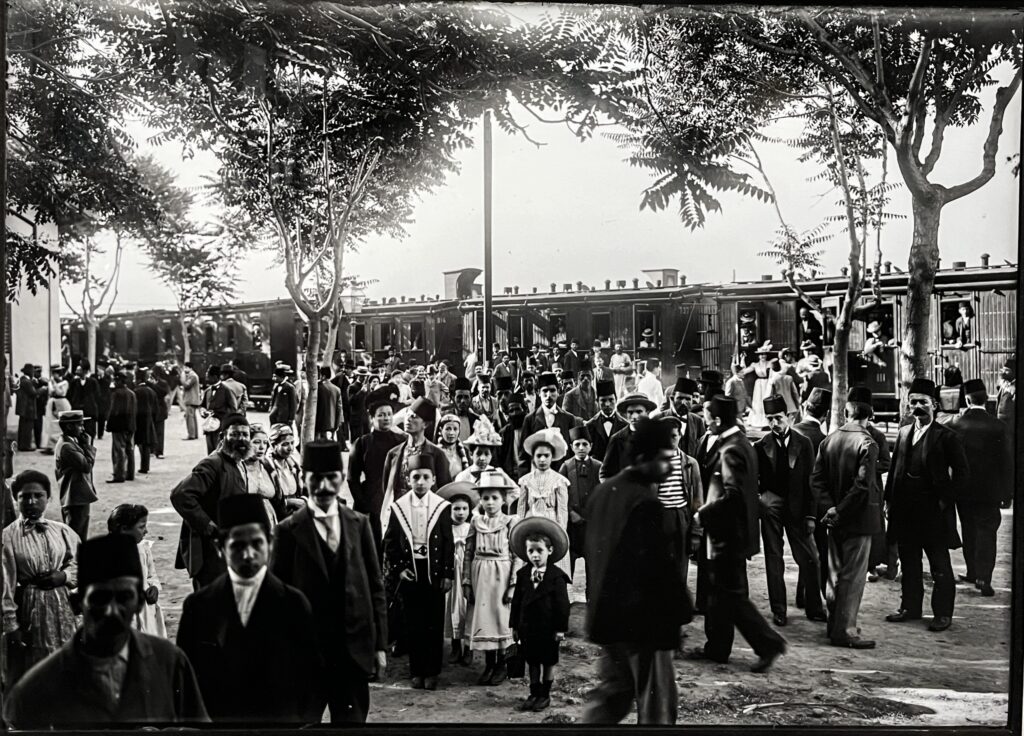
Ali Eniss, the station in Salonika near the Faubourg Hirsch built after the fire of 1890. Many Russian Jewish refugees moved there from Odessa and Kichinev
This exhibition on Jews in Salonika at the beginning of the XX th century is the story of a passionate collector who travelled to Turkey for his fashion business and started buying documentary photographs of the Ottoman world. After his famous company Anastasia went bust in the 1980’s, Pierre de Gigord sold his collection to the Getty Museum but they did not buy his glass plates of Salonika (now Thessalonika in Northern Greece) and he has recently given them to the Musée d’art et d’histoire du Judaisme. A large group of them were shot by Ali Eniss, an interpreter (and maybe spy) at the German consulate during WWI. His photographs were discovered 40 years after he died on a building site where he had lived and were sold to different dealers who eventually sent them to France. The modern prints we see in the show are fascinating for the ambiance and the street scenes that they restitute. But he has photographed many other sceneries including the trees of the Bosphore which will be the theme of another exhibition.

Ali Eniss, Fishermen and dockers in Saloinka, were called Moros and Gripari and often came from Spain
At the time Salonika was Turkish and the Jewish community ran the city with converted Jews, the Sabbateans or dönme, whose community started in the 17 th century. They were separated into three groups, married only within each other (endogamy) and became incredibly powerful with Hamdi bey, becoming mayor of Salonika. He revolutionalised the water and gaz systems, enlarged the quays and the streets, created the tramway. While the city was founded by the King of Macedonia, Cassander in 315 bc, the first 500 Jewish families are mentioned in 1169 by Benjamin de Tudèle. They are carpet weavers, sail makers and tradesmen. In 1430, the town is conquered by the Ottomans and takes the name of Selänik. After there are expelled from Spain, more Jews move there: they are 20 000 in 1492. In 1668, it is the largest community in town.
in 1908, Salonika is the stage of the Young Turk revolution and the Jewish lawyer, Emmanuel Carasso, who heads the masonic lodge Macedonia Rissorta, is elected MP from Salonika. Eli Modiano, who studied at Ecole Centrale in Paris, builds the customs building in 1910 and a large villa for his father Jacob, which is now the Ethnological and folkloric museum of Macedonia and Thrace. A synagogue will also be built in 1898 and later destroyed by the Germans. In 1913, Salonika becomes Greek and is partly destroyed by a fire which starts in the Jewish quarter. In 1923, Muslims and Sabbateans are asked to leave the city and a large group of Greeks move in. In the Spring and summer of 1943, 96% of the Jews are deported and killed and the Nazis erase all signs of the Jewish culture in town. This history was established by Catherine Pinguet the co-curator of the show and is developed in the excellent catalogue published by CNRS.
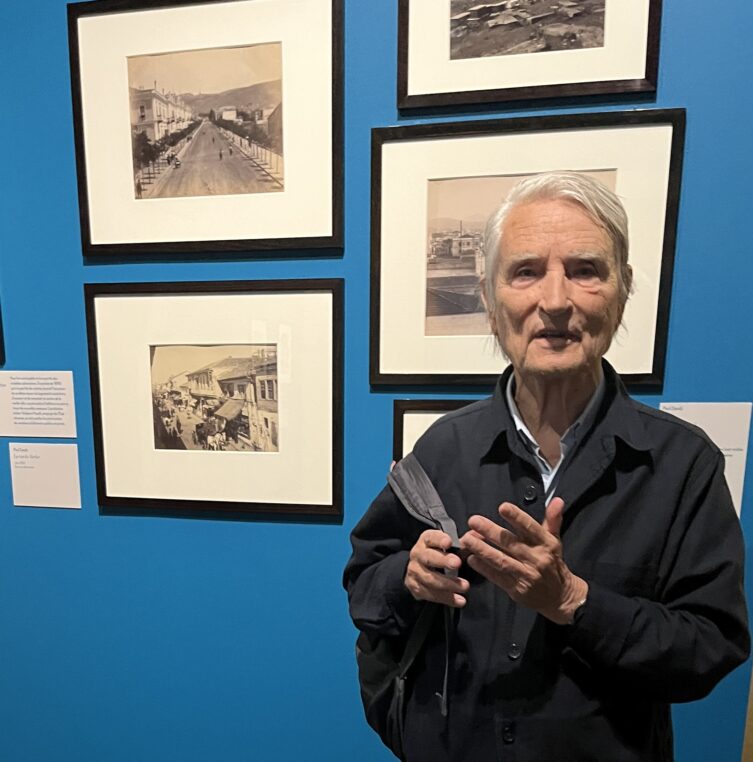
Pierre de Gigord’s collection now at the Getty, was the largest Ottoman photographic ensemble in the world
Rather than being a photo exhibition it is really a historical account of this very important Jewish and Sabbatean community in Turkish history. The fire of 1917 was obviously one of the most reported events of the time and there are multiple photographs and postcards of it. As there are numerous shots of the 1908 revolution.
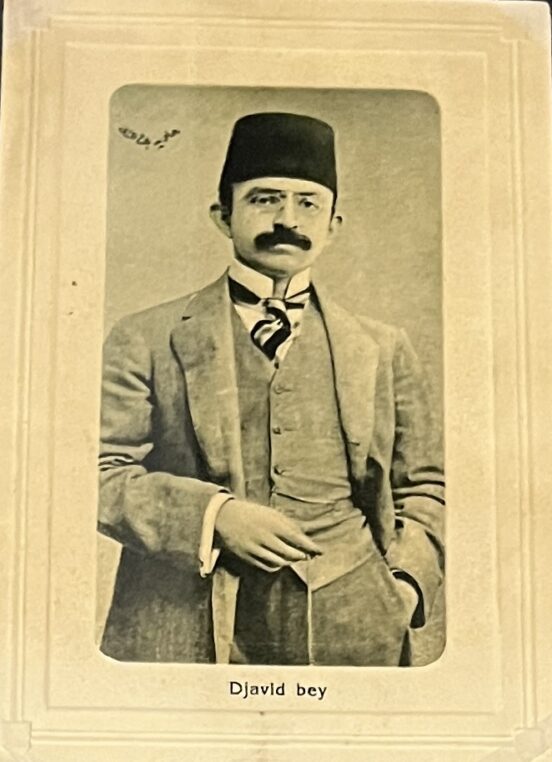
David bey, Sabbatean member of the masonic lodge, Perserverancia, minister of Finance and nicknamed the Gambetta of Your Turkey
Nicknamed the “Jerusalem of the Balkans”, Salonika was successively Macedonian, Roman, Byzantine and Ottoman in five centuries, before becoming Greek again in 1912. It has kept its Jewish community for two thousand years until 1943. On Sunday October 8, a conference will take place at the museum with Cathrine Pinguet and Alexandra Patrikiou, from the Jewish museum in Greece. There are also guided tours of the show. Until April 21, 2024, MAHJ
Share this Post
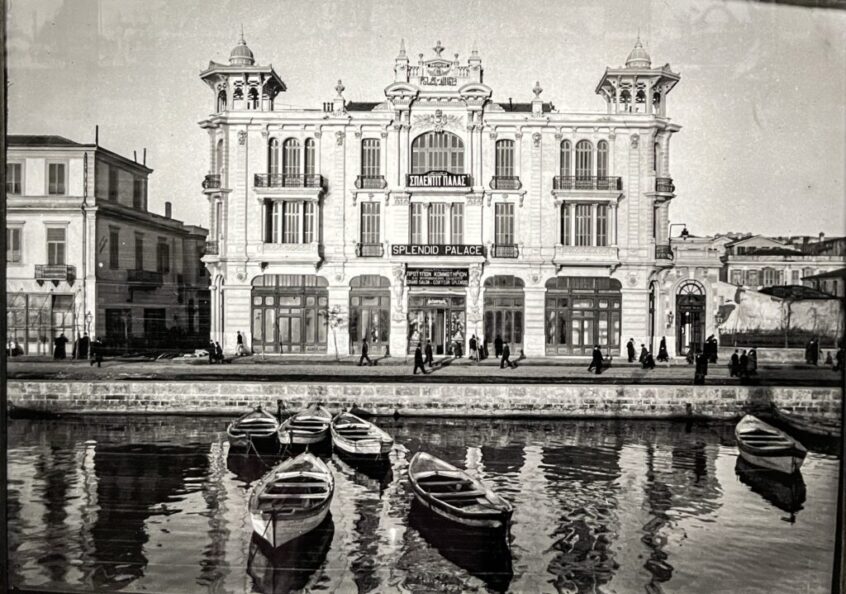
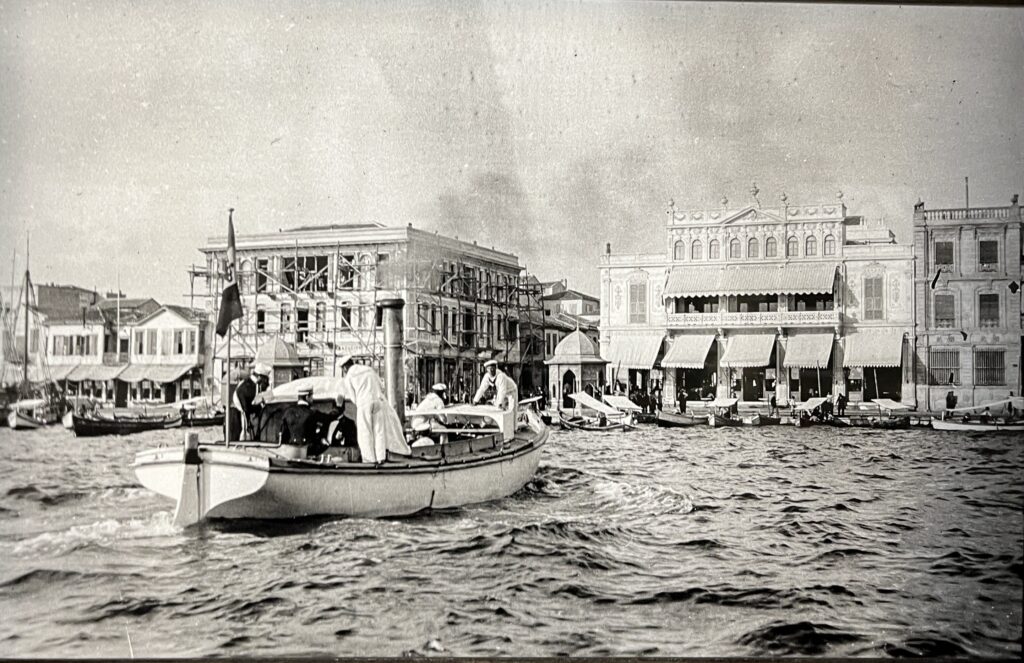
4 Comments on “In Ottoman Salonika, Jews reigned…”
Thank you for this, Laure. How fascinating. I won’t miss this show.
Thank you for this information. This is a must-see exhibit!
THANK YOU !!!
A wonderful exhibition and article/presentation!
Very touched to learn about it!
I will do my best to see it, as along with my artwork I do a historical research :I have been photographing and taking testimonies of Greek Jews survivors of the Holocaust for the past 11 years.
As we ponder the movements of peoples today, escaping oppression, looking for better life in new places or trying to integrate and contribute to other cultures this exhibit and the commentary, a worthwhile lesson in history with its many ebbs and flows successes and tragedies, is worth much wider distribution maybe a book, a film.